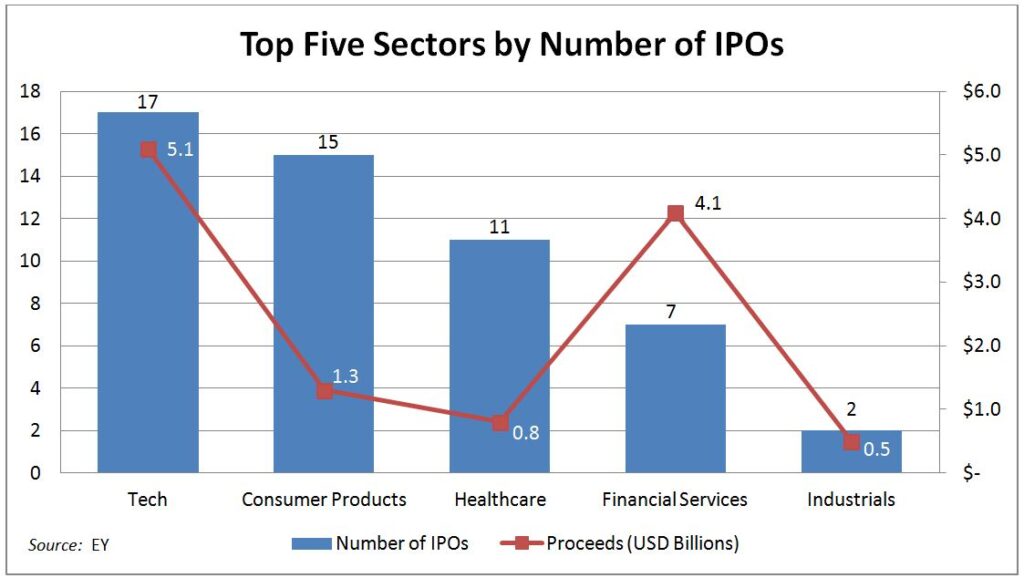
IPO Explained : How to Start the Right Way

IPO explained simply.
Ever thought about how companies go from being private to being in the stock market spotlight?
It’s through something called an Initial Public Offering, or IPO.
It’s like a big debut for companies, with lots of potential but also some challenges.
Now, what if you could make sure your company’s IPO starts off on the right foot?
That’s what we’re here to explore – simple steps and smart moves to launch your IPO successfully.
Ready to dive in and make your company’s financial debut a hit? Let’s get started!
What is an IPO and Why Does it Matter for Businesses?

An IPO, or Initial Public Offering, is like a grand opening for a company in the stock market.
It’s when a private company decides to sell its shares to the public for the first time.
Imagine a company transitioning from a private club to a bustling marketplace, where anyone can become a shareholder.
This move is a big deal for businesses. It’s not just about raising money; it’s a game-changer.
By going public, a company can attract a flood of new investors and get its shares traded on stock exchanges.
This increased visibility can boost the company’s financial standing, fuel future growth, and open doors to exciting opportunities.
In essence, an IPO transforms a company, turning it into a publicly-traded entity.
It’s a crucial step for those aiming to expand, innovate, and make their mark in the competitive world of business.
Pros and Cons of Going Public ( IPO Explained)
| PROs | CONs |
|---|---|
| Access to Capital | Costs and Compliance |
| Enhanced Visibility and Prestige | Loss of Control |
| Currency for Acquisitions | Short-Term Focus |
| Liquidity for Investors | Vulnerability to Market Fluctuations |
| Employee Benefits | Disclosure of Information |
Advantages
- Access to Capital: Going public means a company can raise significant funds by selling shares to the public. (This influx of capital can be used for expansion, research, and other strategic initiatives.)
- Enhanced Visibility and Prestige: A public listing brings increased visibility and credibility. (It can attract attention from customers, partners, and potential investors, enhancing the company’s reputation.)
- Currency for Acquisitions: Publicly traded shares can be used as a valuable currency for acquisitions. (This provides flexibility in strategic moves and potential mergers.)
- Liquidity for Investors: Going public allows early investors and employees to sell their shares, providing liquidity. (This can be an attractive incentive for talent recruitment.)
- Employee Benefits: Public companies often use stock options as part of employee compensation, creating a sense of ownership and aligning employee interests with company success.
Disadvantages
- Costs and Compliance: The process of going public is expensive, involving regulatory compliance, legal fees, and ongoing reporting obligations. (Small companies may find these costs onerous.)
- Loss of Control: Public companies are subject to the demands and scrutiny of shareholders. (Founders and management may experience a loss of control over the company’s direction.)
- Short-Term Focus: Public companies often face pressure to deliver short-term results, which might conflict with long-term strategic goals. (This pressure can be challenging for management.)
- Vulnerability to Market Fluctuations: Share prices of public companies can be volatile, influenced by market sentiment and economic conditions. (This can impact the company’s valuation and perceived stability.)
- Disclosure of Information: Public companies must disclose financial and operational information regularly, which can expose sensitive details to competitors and the public.
In weighing the decision to go public, companies must carefully consider these pros and cons.
Remember that, while the advantages can offer substantial benefits, the challenges and changes associated with being a public company demand thoughtful consideration and strategic planning.
Is It Right for You?

Taking a company public is a significant decision with long-lasting implications.
Before venturing into the realm of public markets, consider the following crucial factors before going public:
- Financial Readiness:
- Assess the company’s financial stability and growth prospects.
- Ensure sufficient revenues and profits to meet the demands of public shareholders.
- Evaluate the need for additional capital and how it aligns with the company’s strategic plans.
- Market Conditions:
- Analyze the current economic climate and stock market conditions.
- Consider whether the market is favorable for IPOs, as this can impact the valuation and reception of your offering.
- Legal and Regulatory Compliance:
- Understand the legal and regulatory requirements associated with being a public company.
- Assess the costs and resources needed for compliance with securities regulations and ongoing reporting obligations.
- Corporate Governance:
- Establish robust corporate governance practices to meet the expectations of public investors.
- Consider the composition of the board, audit committees, and internal controls.
- Management Preparedness:
- Evaluate the readiness of the management team to navigate the challenges of being a public company.
- Consider the time and effort required for communication with shareholders, analysts, and the media.
- Timing and Investor Appetite:
- Gauge the interest of institutional and retail investors in your industry.
- Assess the optimal timing for your IPO based on market trends and investor sentiment.
- Competitive Landscape:
- Analyze the competitive landscape and how going public positions your company against industry peers.
- Consider the potential impact on your competitive advantage and market positioning.
- Strategic Objectives:
- Clarify the strategic objectives behind going public. Is it for raising capital, increasing visibility, or facilitating employee stock options?
- Align the decision with the long-term goals of the company.
- Post-IPO Plans:
- Develop a clear plan for utilizing the capital raised through the IPO.
- Consider the company’s growth trajectory, potential mergers or acquisitions, and other strategic initiatives.
- Investor Relations Strategy:
- Formulate an investor relations strategy for effective communication with shareholders.
- Be prepared for the demands of transparency and disclosure that come with being a public company.
- Employee Impact:
- Assess how going public will impact employees, particularly in terms of stock options and changes in company culture.
- Communicate the implications clearly to maintain employee morale and commitment.
By carefully considering these 11 factors, a company can make an informed decision about whether to pursue an IPO and set the stage for a successful transition to the public markets.
Financial Requirements Before Considering an IPO

Before embarking on the journey of an Initial Public Offering (IPO), a company must meticulously evaluate its financial standing.
Here are 10 key considerations related to financial requirements that a company need to consider before going public:
- Profitability and Revenue Growth:
- Assess Profitability: Evaluate if the company has a consistent track record of profitability. Profitable companies tend to attract more favorable attention from investors.
- Steady Revenue Growth: Investors often look for companies with a history of steady revenue growth, indicating market demand and business sustainability.
- Financial Transparency:
- Transparent Financial Reporting: Implement transparent and robust financial reporting practices. Potential investors will scrutinize financial statements, so clarity and accuracy are crucial.
- Audited Financials: Having audited financial statements adds credibility and instills confidence in prospective investors.
- Debt Levels and Capital Structure:
- Manageable Debt Levels: Evaluate the company’s debt levels and ensure they are manageable. High levels of debt can be a red flag for investors.
- Optimal Capital Structure: Strive for an optimal capital structure that balances debt and equity to maximize financial efficiency.
- Working Capital Management:
- Efficient Working Capital: Maintain efficient working capital management. Investors seek assurance that the company can cover short-term obligations and sustain operations.
- Use of IPO Proceeds:
- Clear Utilization Plan: Define a clear plan for utilizing the funds raised through the IPO. Demonstrating a strategic purpose for the capital can enhance investor confidence.
- Profit Margin and Earnings Quality:
- Healthy Profit Margins: Aim for healthy profit margins that reflect the company’s ability to generate profits from its operations.
- Quality of Earnings: Investors value consistent and high-quality earnings. Avoid reliance on one-time gains or irregular income sources.
- Cash Flow Adequacy:
- Strong Cash Flow: Robust and positive cash flow is critical. It ensures the company can meet financial obligations and invest in growth initiatives.
- Free Cash Flow: Investors often look at free cash flow as a measure of a company’s financial health and flexibility.
- Market Conditions and Valuation:
- Assess Market Conditions: Consider the prevailing market conditions. An IPO is more likely to succeed in a favorable market.
- Reasonable Valuation: Strive for a reasonable valuation that reflects the company’s true worth. Overvalued stocks can lead to challenges in the post-IPO period.
- Risk Assessment:
- Comprehensive Risk Evaluation: Perform a comprehensive risk assessment. Identify and address potential risks that may concern investors.
- Corporate Governance Practices:
- Robust Governance Structure: Establish and communicate a robust corporate governance structure. Sound governance practices enhance investor trust and confidence.
Ensuring financial requirements and stability involves a holistic evaluation of the company’s financial health, strategic positioning, and adherence to best practices.
By addressing these aspects, a company can enhance its readiness for a successful IPO.
Initial Public Offerings (IPOs) Books Recommendation

Whether you’re a business enthusiast, an aspiring entrepreneur, or an investor seeking to understand the dynamics of the IPO landscape, these recommended reads offer valuable perspectives and practical insights.
Here are some insightful books :
#Amazon ADV
- “Zero to IPO: Over $1 Trillion of Actionable Advice from the World’s Most Successful Entrepreneurs” by Frederic Kerrest
- “Running a Public Company: From IPO to SEC Reporting“ by Scott G. Stephenson
- “The IPO Playbook: An Insider’s Perspective on Taking Your Company Public and How to Do It Right” by Steve Cakebread
- “Investment Banking: Valuation, LBOs, M&A, and IPOs “ by Joshua Rosenbaum
Happy reading and may these recommendations empower you on your journey of understanding the world of Initial Public Offerings.
(Amazon Affiliate Disclaimer: As an Amazon Associate, we earn from qualifying purchases. Our website contains affiliate links, and if you make a purchase through these links, we may earn a small commission without any extra cost to you. This commission helps support and maintain our website, allowing us to provide valuable content. Thank you for your support! )
Step-by-Step IPO Process: From Private to Public

Picture your favorite local café suddenly turning into a bustling international chain.
That’s a bit like what happens when a company decides to go public through an Initial Public Offering, or IPO.
It’s the moment when a business goes from being a well-kept secret to a name that everyone knows.
The Initial Public Offering, or IPO, is not just a financial event; it’s a strategic move that opens the doors to a broader audience of investors, challenges the status quo of corporate operations, and shapes the future trajectory of a business.
In this exploration of the IPO process, we delve into the intricacies, considerations, and decisive moments that define this remarkable transition.
Here are the 11 crucial steps a company need to follow in order to go public:
- Preparation Phase:
- Hire Advisors: Engage investment bankers, legal counsel, and auditors.
- Financial Statements: Prepare audited financial statements for the past several years.
- Due Diligence: Conduct thorough due diligence to identify and address potential issues.
- Securities and Exchange Commission (SEC) Filings:
- Drafting the Registration Statement (S-1): Prepare a detailed document outlining the company’s financials, operations, and risks.
- SEC Review: Submit the S-1 to the SEC, undergo a review process, and respond to any SEC comments.
- Quiet Period and Marketing:
- Quiet Period: Enter a quiet period where the company and its insiders limit communication to avoid influencing investors.
- Roadshow: Conduct a series of presentations to potential investors, showcasing the company’s value proposition.
- Pricing and Allocation:
- Price Determination: Work with underwriters to set the IPO price based on investor demand and market conditions.
- Allocation: Allocate shares to institutional investors, retail investors, and other stakeholders.
- IPO Day:
- Stock Market Debut: List the company’s shares on the chosen stock exchange.
- Trading Begins: Shares become available for public trading.
- Post-IPO Activities:
- Stabilization Period: Underwriters may engage in market stabilization activities to support the stock price.
- Closing the Offering: Finalize the offering by settling transactions and allocating shares.
- Transition to Public Company:
- Ongoing Reporting: Fulfill ongoing reporting obligations, including quarterly and annual filings with the SEC.
- Shareholder Relations: Establish and maintain communication with shareholders, analysts, and the broader public.
- Employee Stock Options:
- Employee Benefits: Address the impact on employee stock options and ensure a smooth transition for employees.
- Corporate Governance Compliance:
- Governance Enhancements: Implement or enhance corporate governance practices to meet public company standards.
- Board Composition: Ensure the board of directors is appropriately structured.
- Adaptation to Market Dynamics:
- Market Monitoring: Stay attuned to market dynamics and respond to changes in investor sentiment.
- Strategic Flexibility: Maintain strategic flexibility for potential mergers, acquisitions, or other growth initiatives.
- Long-Term Planning:
- Strategic Roadmap: Develop a long-term strategic roadmap aligning with the company’s newfound public status.
- Investor Relations: Continue building positive relationships with investors and stakeholders.
Navigating the IPO process requires careful planning, transparency, and collaboration with a team of experienced advisors. Each step plays a crucial role in ensuring a successful transition from a private company to a publicly traded entity.
How to Effectively Present the Company to Investors ?

Investors aren’t just looking at spreadsheets; they’re envisioning a partnership with a company that stands at the forefront of innovation, a company with a heartbeat of its own.
Presenting your company to investors is a critical aspect of the Initial Public Offering (IPO) process.
Here’s a guide on how to make a compelling and effective presentation:
- Craft a Clear Story:
- Vision and Mission: Start with a concise overview of your company’s vision and mission. Clearly articulate what sets your company apart.
- Financial Performance:
- Key Financial Metrics: Highlight key financial metrics, such as revenue growth, profit margins, and any other financial indicators that showcase the company’s performance.
- Historical Financials: Present a historical overview of financial performance to demonstrate the company’s stability and growth trajectory.
- Market Opportunity:
- Market Size and Trends: Provide insights into the market your company operates in. Showcase the size of the market, current trends, and potential for growth.
- Competitive Landscape: Discuss competitors and explain how your company positions itself uniquely.
- Business Model:
- Revenue Streams: Clearly outline your company’s revenue streams and business model. Explain how you generate income and sustain profitability.
- Customer Acquisition and Retention: Share strategies for customer acquisition and retention to demonstrate the sustainability of your business model.
- Operational Excellence:
- Efficiency and Scalability: Emphasize operational efficiency and scalability. Investors want to know that your company can handle growth without sacrificing performance.
- Key Operational Processes: Provide insights into key operational processes that contribute to the company’s success.
- Strategic Initiatives:
- Future Growth Plans: Outline strategic initiatives for future growth. Discuss product launches, geographic expansion, or any other plans to capture new opportunities.
- Innovation and R&D: Highlight the company’s commitment to innovation and ongoing research and development efforts.
- Risk Mitigation:
- Risk Analysis: Address potential risks transparently. Investors appreciate a candid discussion of challenges and how the company plans to mitigate them.
- Compliance and Regulatory Measures: Discuss the company’s adherence to regulatory standards and measures in place for compliance.
- Management Team:
- Leadership Profiles: Introduce key members of the management team. Highlight their expertise and experience in steering the company toward success.
- Corporate Culture: Share insights into the company’s corporate culture, emphasizing values and principles.
- Financial Projections:
- Future Financial Outlook: Present realistic and well-supported financial projections. Clearly communicate the expected growth trajectory and financial milestones.
- Q&A Preparation:
- Anticipate Questions: Prepare for potential questions investors may ask. Be ready to address concerns and provide additional context.
- Engagement and Interaction:
- Interactive Elements: Incorporate interactive elements such as Q&A sessions or demonstrations to engage investors.
- Networking Opportunities: Provide opportunities for investors to interact with the management team.
Remember, the key is to present a well-rounded and compelling narrative that not only showcases past achievements but also outlines a promising future.
Clarity, transparency, and a genuine passion for your company’s potential are essential elements of an effective investor presentation.
Real-World Case Studies and IPO Explained by Examples
Today, we’re not just talking about success stories; we’re exploring real examples of companies that did it right.
Imagine these stories as roadmaps, showing the way for others who want to take their companies public.
It’s like learning from the best—what worked, what didn’t, and how they made it through.
Case Study 1: Tesla
Triumphs:
- Innovative Vision: Tesla’s IPO was a game-changer, marking the arrival of electric vehicles in the mainstream market.
- Strategic Timing: The IPO coincided with increasing interest in sustainable technology, contributing to its success.
- Long-Term Focus: Tesla’s commitment to a long-term vision, including energy solutions, fueled sustained investor confidence.
Lessons Learned:
- Visionary Leadership Pays Off: Having a bold and visionary leader at the helm, like Elon Musk, can significantly impact investor perception.
- Timing Matters: Aligning with market trends and timing the IPO strategically can enhance success.
- Diversification of Vision: Expanding beyond a single product (cars) to a comprehensive vision (clean energy) attracts a broader investor base.
Case Study 2: Alibaba
Triumphs:
- Global Expansion: Alibaba’s IPO was not just a domestic success; it symbolized China’s emergence as a global economic force.
- Diversification of Services: Beyond e-commerce, Alibaba’s inclusion of cloud computing and digital entertainment broadened its appeal.
- Massive IPO Size: It was one of the largest IPOs globally, attracting significant investor attention.
Lessons Learned:
- Global Vision Matters: Expanding beyond local markets to have a global impact can attract international investors.
- Diversify Offerings: Offering a range of services beyond the core business can enhance the company’s resilience and attractiveness.
- Leverage Scale: The sheer scale of Alibaba’s IPO reflected confidence in its potential for future growth.
Case Study 3: Facebook

Triumphs:
- User Base: Facebook’s IPO capitalized on its massive user base, making it one of the most anticipated offerings in tech history.
- Monetization Strategy: The company demonstrated a clear plan to monetize its user engagement through targeted advertising.
- Steady Growth: Despite early stock volatility, Facebook’s steady user growth and evolving ad platform contributed to long-term success.
Lessons Learned:
- Monetization Clarity: Clearly articulating how a company plans to make money from its services is crucial for investor confidence.
- User Base as an Asset: A large and engaged user base can translate into significant value during an IPO.
- Staying Power: Despite initial challenges, companies that exhibit resilience and sustained growth can recover from early setbacks.
Case Study 4: Amazon
Triumphs:
- Strategic Evolution: Amazon’s IPO journey showcased its evolution from an online bookseller to a diversified e-commerce and tech powerhouse.
- Customer Focus: A relentless focus on customer satisfaction and service became a cornerstone of Amazon’s success.
- Innovation Investments: Investors appreciated Amazon’s commitment to innovation, seen in ventures like Amazon Web Services (AWS).
Lessons Learned:
- Adaptability is Key: Companies that can adapt their business models to changing market demands are more likely to succeed post-IPO.
- Customer-Centric Approach: Prioritizing customer needs and satisfaction contributes to long-term success.
- Diversification of Revenue Streams: Expanding into new ventures and revenue streams can enhance the overall appeal of the company.
Key Takeaways:
- Innovation is Attractive: Investors are drawn to companies with innovative products or services that can potentially disrupt industries.
- Global Appeal Boosts Confidence: Companies with a global outlook and a strategy for international markets tend to capture more attention.
- Timing is Strategic: Launching an IPO during a period of high market interest or when the company is at a pivotal moment can contribute to success.
- Diversification is Key: Expanding beyond a single offering to diversify services or products can make a company more appealing and resilient.
Consider these case studies as a constellation of illuminating stars, each offering a unique brilliance that lights up the path for others.
Beyond the financial figures and market performances, these cases encapsulate the spirit of resilience, innovation, and strategic acumen that defines a successful IPO.
Final Thoughts
As you explore the world of IPOs, think of these sources as helpful guides, like maps for a journey.
They’ll steer you through the details of going public, making the whole Initial Public Offering adventure easier to understand and navigate.
- SEC’s EDGAR Database:
- Website: SEC EDGAR
- Description: The U.S. Securities and Exchange Commission’s EDGAR database is a treasure trove of regulatory filings. Companies planning an IPO can find a wealth of information, including S-1 filings and other essential documents.
2. NYSE and NASDAQ Websites:
- Websites: NYSE IPOs, NASDAQ IPOs
- Description: The New York Stock Exchange (NYSE) and NASDAQ maintain dedicated sections providing up-to-date information on recent IPOs, market trends, and the overall IPO landscape.
3. Crunchbase:
- Website: Crunchbase
- Description: Crunchbase is a comprehensive platform that tracks companies from their early stages to IPOs. It’s a valuable resource for researching companies, their funding history, leadership, and other relevant information.
USE OUR FREE CALCULATORS
- The Best Free Compound Interest Calculator (CIC)
- Best Return on Investment Calculator (ROI) Free to Use
- The Best Free Inflation Calculator to Use
- The Best Free Savings Calculator of 2023
- Profit Loss Calculator: Best Free to Use
- The Best Crypto Mining Profitability Calculator of 2023
Feel free to explore these links for comprehensive information on IPOs, recent listings, and valuable insights for companies contemplating the IPO journey.
Remember, knowledge is power in the world of IPOs.
By exploring these sources, you equip yourself with the tools needed to make informed decisions, whether you’re an investor seeking opportunities or a company contemplating the leap into the public arena.
By exploring these sources, you equip yourself with the tools needed to make informed decisions, whether you’re an investor seeking opportunities or a company contemplating the leap into the public arena.
Recent Posts















